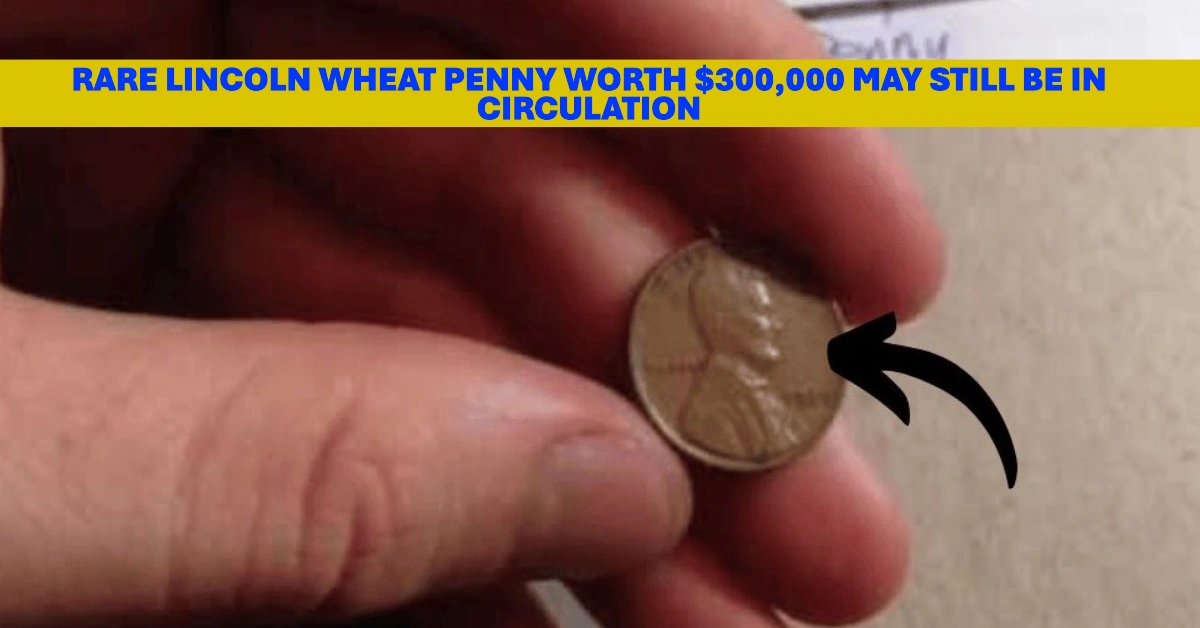The Lincoln Wheat Penny is more than just an old coin—it’s a living artifact of American history. First minted in 1909 to honor the 100th birthday of President Abraham Lincoln, it marked the first time a real person, rather than a symbolic figure like Lady Liberty, appeared on a U.S. coin.
A Revolutionary Design
Victor David Brenner, a renowned sculptor, designed the Lincoln Wheat Penny. The front (obverse) features Lincoln’s bust, while the back (reverse) displays two stylized wheat stalks, giving the coin its nickname.
This penny replaced the Indian Head cent and remained in circulation until 1958, when it was succeeded by the Lincoln Memorial cent.
Table of Contents
Why Some Lincoln Wheat Pennies Are Worth Hundreds of Thousands of Dollars
While most Lincoln Wheat Pennies are common and worth only a cent or two, a few rare varieties have become prized possessions for collectors—sometimes selling for well over $300,000.
Factors That Determine High Value
Several key elements contribute to the extraordinary value of certain Lincoln Wheat Pennies:
- Low Mintage Numbers: Fewer coins minted equals greater rarity.
- Mint Location: Coins from specific mints (especially San Francisco and Denver) are more valuable.
- Minting Errors: Mistakes during production—such as misstrikes or the use of the wrong metal—are especially prized.
- Condition: Coins in uncirculated or near-pristine condition (graded as MS65 or higher) are exponentially more valuable.
The Most Valuable Lincoln Wheat Pennies Known to Exist
1909-S VDB Penny
This coin is a legend among collectors. It was minted in San Francisco and features the designer’s initials, V.D.B., on the reverse. Only 484,000 were produced before the initials were removed, making it extremely rare. Top-condition examples have sold for over $300,000.
1914-D Lincoln Penny
Minted in Denver, this penny is valuable due to both its low mintage and the fact that many existing examples were poorly struck. Well-preserved coins from this year can sell for tens of thousands, and some top-quality examples have approached six-figure prices.
1943 Copper Penny
The U.S. Mint switched to steel pennies in 1943 to conserve copper for World War II. However, a few copper blanks were accidentally used, resulting in one of the most famous error coins in American history. Fewer than 40 are known to exist, and some have sold for more than $300,000—one even topping $1 million.
How to Identify a Rare Lincoln Wheat Penny
While you’re unlikely to find a mint-condition rarity in pocket change, some valuable examples still turn up from time to time. Here’s what to look for:
1. Check the Year and Mintmark
- Look under the date on the coin’s obverse for mintmarks like “S” (San Francisco) or “D” (Denver).
- Years to pay close attention to include 1909, 1914, 1922, and 1943.
2. Examine the Condition
- Coins with minimal wear, sharp details, and no corrosion are more valuable.
- Have a reputable coin grader assess the condition to determine its market value.
3. Look for Mint Errors
- Misaligned strikes, double dies, off-center prints, and incorrect materials can make a penny worth hundreds or thousands of dollars.
Rare Lincoln Wheat Penny Worth $200,000 May Still Be in Circulation
Can You Really Find These Pennies Still in Circulation?
Surprisingly, yes—especially those minted in the 1940s and 1950s. While the chances are slim, people have found valuable Lincoln Wheat Pennies in:
- Spare change
- Inherited coin jars
- Estate sales
- Garage or flea markets
Even though it’s rare, it’s not impossible. The thrill of possibly discovering a six-figure coin in your own pocket change keeps collectors and enthusiasts always on the lookout.
Final Thoughts: Keep Your Eyes on Your Pennies
The Lincoln Wheat Penny isn’t just a historical keepsake—it could be a hidden treasure. With a sharp eye and a little knowledge, anyone could stumble upon a coin worth hundreds of thousands of dollars.
So next time you’re counting change or browsing through an old coin collection, don’t rush. That ordinary-looking penny just might be an extraordinary find.
